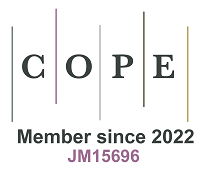REFERENCES
1. Aspon SZ, Mohamed Murid AH, M. S. Nasser M, Rahmat H. Integral equation approach for computing green’s function on doubly connected regions via the generalized neumann kernel. Jurnal Teknologi 2014:71.
2. Baliga J, Ayre RWA, Hinton K, Tucker RS. Green cloud computing: balancing energy in processing, storage, and transport. Proc IEEE 2011;99:149-67.
3. Benotmane Z, Belalem G, Neki A. Towards a cloud computing in the service of green logistics. IJLSM 2018;29:37.
4. Ahmad TB, Nordin MS. University students’ subjective knowledge of green computing and pro-environmental behavior. IES 2014;7:64-74.
5. Ibrahim A. Understanding the factors affecting the adoption of green computing in the gulf universities. ijacsa 2018;9:304-11.
6. Alarifi A, Dubey K, Amoon M, et al. Energy-efficient hybrid framework for green cloud computing. IEEE Access 2020;8:115356-69.
7. Castillo O, Melin P. . A new fuzzy-fractal-genetic method for automated mathematical modelling and simulation of robotic dynamic systems. 1998 IEEE International Conference on Fuzzy Systems Proceedings; IEEE World Congress on Computational Intelligence (Cat. No.98CH36228); 1998, p. 1182-7.
8. Castillo O, Melin P. Intelligent adaptive model-based control of robotic dynamic systems with a hybrid fuzzy-neural approach. Applied Soft Computing 2003;3:363-78.
9. Melin P, Sánchez D. Multi-objective optimization for modular granular neural networks applied to pattern recognition. Information Sciences 2018;460-461:594-610.
10. Olivas F, Valdez F, Castillo O, Melin P. Dynamic parameter adaptation in particle swarm optimization using interval type-2 fuzzy logic. Soft Comput 2016;20:1057-70.
11. Castillo O, Castro JR, Melin P, Rodriguez-diaz A. Application of interval type-2 fuzzy neural networks in non-linear identification and time series prediction. Soft Comput 2014;18:1213-24.
12. Ontiveros E, Melin P, Castillo O. High order α-planes integration: A new approach to computational cost reduction of General Type-2 Fuzzy Systems. Eng Appl Artif Intell 2018;74:186-97.
13. Berciu M. On computing the square lattice Green's function without any integrations. J Phys A: Math Theor 2009;42:395207.
14. Dharan GB, Jayalakshmi S. Harnessing green cloud computing- an energy efficient methodology for business agility and environmental sustainability. IJETER 2020;8:4193-200.
15. Prakash B, Jayashri S, Karthik TS. A hybrid genetic artificial neural network (G-ANN) algorithm for optimization of energy component in a wireless mesh network toward green computing. Soft Comput 2019;23:2789-98.
16. Carvin LB, Kumar ADV, Arockiam L. . ENNEGCC-3D energy efficient scheduling algorithm using 3-D neural network predictor for Green Cloud Computing environment. 2017 International Conference on Intelligent Computing, Instrumentation and Control Technologies; Kannur(IN); 2017, p. 1316.
17. Kashyap P, Kumar S, Dohare U, Kumar V, Kharel R. Green computing in sensors-enabled internet of things: neuro fuzzy logic-based load balancing. Electronics 2019;8:384.
18. Ragmani A, El Omri A, Abhgour N, Moussaid K, Rida M. . A novel green service level agreement for cloud computing using fuzzy logic. CLOSER 2018 - proceedings of the 8th International Conference on Cloud Computing and Services Science; 2018, p. 658.
19. Singh G, Mahajan M. A green computing supportive allocation scheme utilizing genetic algorithm and support vector machine. IJITEE 2019;8:760-6.
20. Kaur B, Kaur A. . An efficient approach for green cloud computing using genetic algorithm. Proceedings on 2015 1st International Conference on next generation computing technologies; 2015, p. 10.
21. Theja P, Khadar Babu SK. An adaptive genetic algorithm based robust qos oriented green computing scheme for vm consolidation in large scale cloud infrastructures. Indian Journal of Science and Technology 2015:8.
22. Mousavi SM, Foroozesh N, Zavadskas EK, Antucheviciene J. A new soft computing approach for green supplier selection problem with interval type-2 trapezoidal fuzzy statistical group decision and avoidance of information loss. Soft Comput 2020;24:12313-27.
23. Bera S, Jana DK, Basu K, Maiti M. . Novel multi-objective green supply chain model with CO2 emission cost in fuzzy environment via soft computing technique. Studies in Computational Intelligence; 2020, p. 463-80.
24. Bhowmik S, Ray A. Prediction of surface roughness quality of green abrasive water jet machining: a soft computing approach. J Intell Manuf 2019;30:2965-79.
25. Kondratenko Y, Korobko V, Korobko O, Kondratenko G, Kozlov O. . Green-IT approach to design and optimization of thermoacoustic waste heat utilization plant based on soft computing. Studies in Systems, Decision and Control; 2017, p. 287-311.
26. Varghese A, Bajaj P, Malik L. . Design of adaptive traffic flow control system with soft computing tools for green signaling. 2013 International Conference on Human Computer Interactions; 2013.
27. Karthiban K, Raj JS. An efficient green computing fair resource allocation in cloud computing using modified deep reinforcement learning algorithm. Soft Comput 2020;24:14933-42.
28. Zubar AH, Balamurugan R. Green computing process and its optimization using machine learning algorithm in healthcare sector. Mobile Netw Appl 2020;25:1307-18.
29. Gholipour N, Shoeibi N, Arianyan E. . An energy-aware dynamic resource management technique using deep q-learning algorithm and joint VM and container consolidation approach for green computing in cloud data centers. Advances in Intelligent Systems and Computing; 2021, p. 227-33.
30. Yang M, Yu P, Wang Y, et al. . Deep reinforcement learning based green resource allocation mechanism in edge computing driven power internet of things. 2020 International Wireless Communications and Mobile Computing; 2020, p. 388.
31. Kashyap PK, Kumar S, Jaiswal A. . Deep learning based offloading scheme for IoT networks towards green computing. Proceedings - IEEE International Conference on Industrial Internet Cloud; 2019, p. 22.
32. Xu L, Qin M, Yang Q, Kwak K. . Deep reinforcement learning for dynamic access control with battery prediction for mobile-edge computing in green IoT networks. 2019 11th International Conference on Wireless Communications and Signal Processing; 2019.
33. Sahu Y, Pateriya RK, Gupta RK. . Cloud server optimization with load balancing and green computing techniques using dynamic compare and balance algorithm. 2013 5th International Conference and Computational Intelligence and Communication Networks; Mathura; 2013, p. 527-31.
34. Castillo O, Amador-Angulo L. A generalized type-2 fuzzy logic approach for dynamic parameter adaptation in bee colony optimization applied to fuzzy controller design. Inf Sci 2018;460-461:476-96.
35. Olivas F, Valdez F, Castillo O, Gonzalez CI, Martinez G, Melin P. Ant colony optimization with dynamic parameter adaptation based on interval type-2 fuzzy logic systems. Applied Soft Computing 2017;53:74-87.
36. Sánchez D, Melin P, Castillo O. Optimization of modular granular neural networks using a firefly algorithm for human recognition. Eng Appl Artif Intell 2017;64:172-86.
37. González B, Valdez F, Melin P, Prado-arechiga G. Fuzzy logic in the gravitational search algorithm for the optimization of modular neural networks in pattern recognition. Expert Systems with Applications 2015;42:5839-47.
38. González B, Valdez F, Melin P, Prado-arechiga G. Fuzzy logic in the gravitational search algorithm enhanced using fuzzy logic with dynamic alpha parameter value adaptation for the optimization of modular neural networks in echocardiogram recognition. Applied Soft Computing 2015;37:245-54.
39. Miramontes I, Guzman J, Melin P, Prado-arechiga G. Optimal design of interval Type-2 fuzzy heart rate level classification systems using the bird swarm algorithm. Algorithms 2018;11:206.
40. Gonzalez CI, Melin P, Castro JR, Castillo O, Mendoza O. Optimization of interval type-2 fuzzy systems for image edge detection. Applied Soft Computing 2016;47:631-43.
41. Tai K, El-sayed A, Biglarbegian M, Gonzalez C, Castillo O, Mahmud S. Review of recent Type-2 fuzzy controller applications. Algorithms 2016;9:39.
42. Melin P, Gonzalez CI, Castro JR, Mendoza O, Castillo O. Edge-detection method for image processing based on generalized Type-2 fuzzy logic. IEEE Trans Fuzzy Syst 2014;22:1515-25.
43. Castillo O, Melin P. A review on interval type-2 fuzzy logic applications in intelligent control. Information Sciences 2014;279:615-31.
44. Gaxiola F, Melin P, Valdez F, Castro JR, Castillo O. Optimization of type-2 fuzzy weights in backpropagation learning for neural networks using GAs and PSO. Applied Soft Computing 2016;38:860-71.
45. Melin P, Castillo O. Intelligent control of complex electrochemical systems with a neuro-fuzzy-genetic approach. IEEE Transactions on Industrial Electronics 2001;48:951-5.
46. Sanchez MA, Castillo O, Castro JR, Melin P. Fuzzy granular gravitational clustering algorithm for multivariate data. Information Sciences 2014;279:498-511.
47. Sánchez D, Melin P. Optimization of modular granular neural networks using hierarchical genetic algorithms for human recognition using the ear biometric measure. Eng Appl Artif Intell 2014;27:41-56.
48. Sanchez MA, Castro JR, Castillo O, Mendoza O, Rodriguez-diaz A, Melin P. Fuzzy higher type information granules from an uncertainty measurement. Granul Comput 2017;2:95-103.
49. Melin P, Miramontes I, Prado-arechiga G. A hybrid model based on modular neural networks and fuzzy systems for classification of blood pressure and hypertension risk diagnosis. Expert Systems with Applications 2018;107:146-64.






